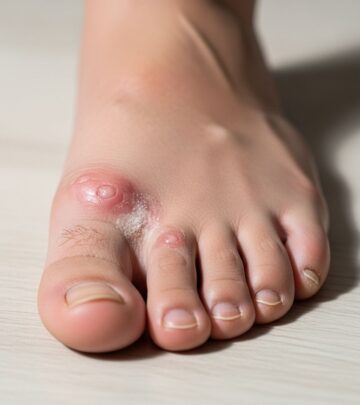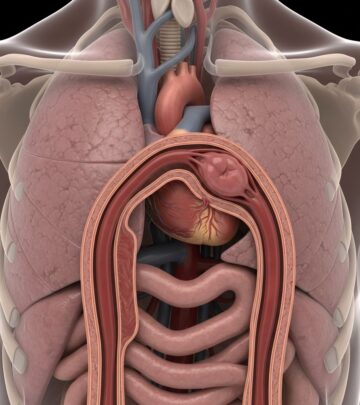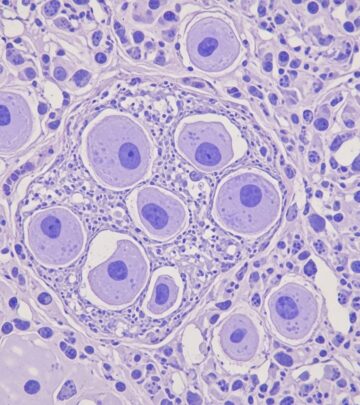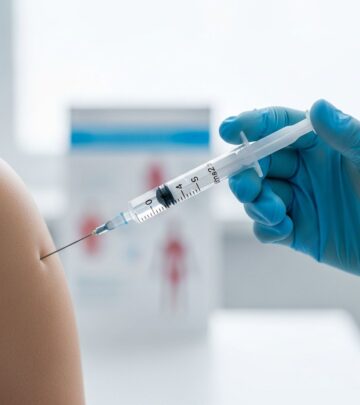Lymphoma: Symptoms, Causes, Diagnosis, and Treatment Options
Explore the types, symptoms, causes, diagnosis, and latest treatment options for lymphoma to support informed care decisions.
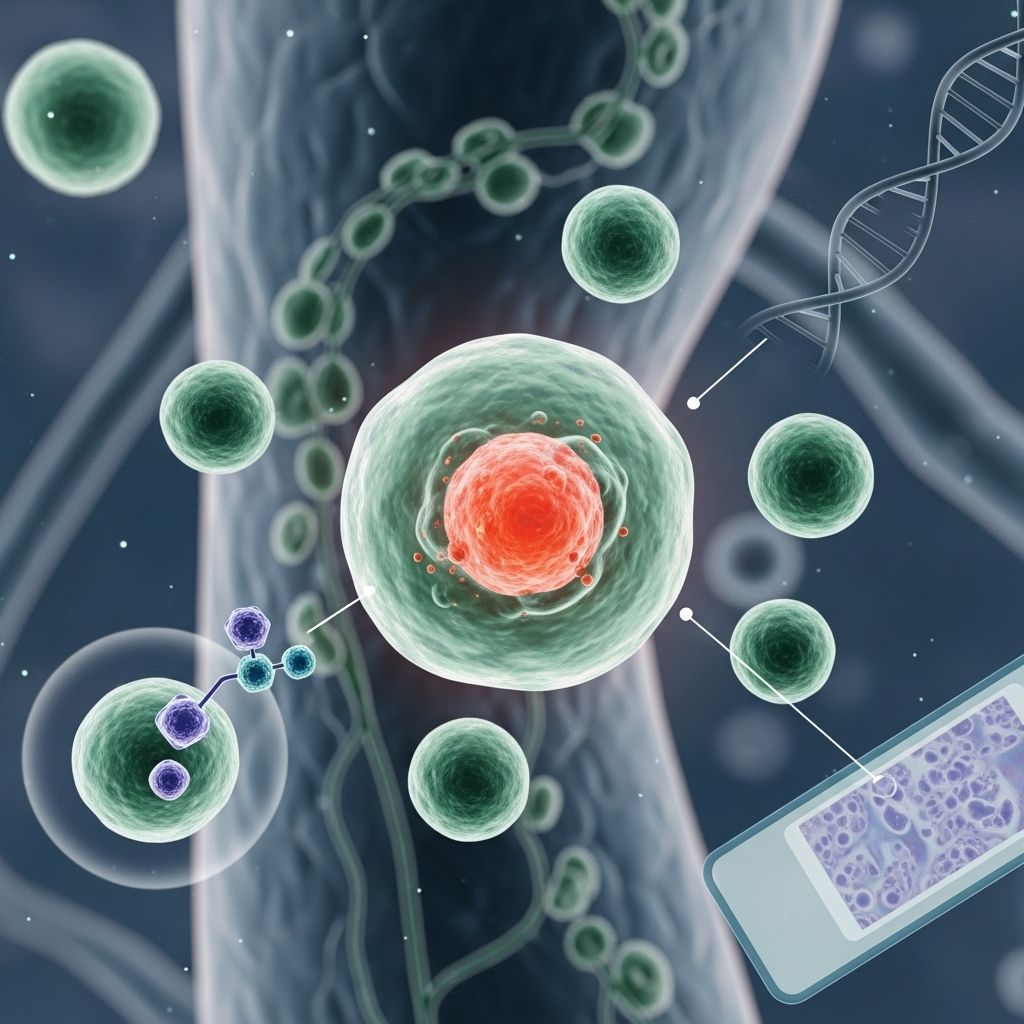
Lymphoma Overview
Lymphoma is a type of cancer that originates in the lymphatic system, an essential part of the immune system. The lymphatic system includes the lymph nodes, spleen, thymus gland, and bone marrow. There are two principal types: Hodgkin lymphoma and Non-Hodgkin lymphoma. Both subtypes disrupt the function of lymphocytes, which are white blood cells vital for fighting infections.
Symptoms of Lymphoma
Lymphoma symptoms may be subtle or pronounced, and not all individuals experience every symptom. Common signs include:
- Painless swelling of lymph nodes in the neck, armpits, or groin that can come and go.
- Persistent fatigue that isn’t relieved by rest.
- Fever and chills without an apparent cause.
- Unexplained weight loss (sometimes called “B symptoms”).
- Drenching night sweats that soak bedclothes.
- Shortness of breath or coughing.
- Itchy skin especially in the case of Hodgkin lymphoma.
- Feeling full quickly or pressure in the abdomen due to enlarged lymph nodes or spleen.
It is important to note that these symptoms are not exclusive to lymphoma and can be caused by other conditions. Persistent or recurring symptoms warrant evaluation by a healthcare professional.
Common Symptoms Table
| Symptom | Typical Presentation | Notes |
|---|---|---|
| Painless lymph node swelling | Neck, armpits, groin | May be intermittent |
| Fatigue | General tiredness | Unrelieved by sleep |
| Fever/Night sweats | High temperature, sweating at night | Occurs without infection |
| Weight loss | Unintentional | Usually 10% or more of body weight |
| Itchy skin | Hodgkin lymphoma patients | May be generalized |
Causes and Risk Factors
The exact causes of lymphoma are not fully understood, but several risk factors may increase susceptibility:
- Genetic predisposition: Family history of lymphoma can elevate risk.
- Immune system compromise: Conditions such as HIV/AIDS, organ transplantation, or autoimmune disorders weaken immune defenses.
- Certain infections: Epstein-Barr virus (EBV) or Helicobacter pylori have been linked to specific lymphomas.
- Age and gender: Lymphoma can occur at any age, but certain types are more frequent in adults or older patients. Some are more common in one sex than the other.
Types of Lymphoma
Lymphoma is classified based on the type of lymphocyte affected:
- Hodgkin lymphoma: Marked by the presence of Reed-Sternberg cells, a specific abnormal lymphocyte.
- Non-Hodgkin lymphoma: Encompasses many subtypes divided into B-cell and T-cell lymphomas. B-cell lymphomas are much more common.
B-cell lymphomas and T-cell lymphomas vary in clinical presentation, growth rate, and treatment approach. Some subtypes include:
- Diffuse large B-cell lymphoma
- Follicular lymphoma
- Cutaneous T-cell lymphoma
Diagnosis of Lymphoma
Diagnosing lymphoma involves a multifaceted approach using physical examination, laboratory studies, and imaging tests.
Diagnostic Steps
- Physical Exam: The doctor checks for swollen lymph nodes and examines the locations such as the neck, spleen, and liver.
- Lymph Node Biopsy: Removal and microscopic analysis of an enlarged node is the gold standard for diagnosis and for subtype classification.
- Bone Marrow Aspiration and Biopsy: Collection of cells from the hipbone helps assess bone marrow involvement.
- Imaging Studies: PET, CT, and MRI scans are performed to detect cancer spread and assess staging.
- Blood tests: Look for anemia or abnormal white cell counts, which may suggest bone marrow involvement.
Types and Purposes of Common Tests
| Test | Purpose |
|---|---|
| Physical Exam | Detect swollen nodes, organ enlargement |
| Lymph Node Biopsy | Confirm lymphoma diagnosis & type |
| Bone Marrow Aspiration/Biopsy | Assess marrow function, cancer spread |
| PET/CT/MRI Scans | Stage the cancer, see overall spread |
Staging and Classification
Staging is critical for guiding treatment decisions. It determines:
- Extent of cancer spread within lymphatic system and other organs
- Involvement of single versus multiple lymph node regions
- Presence of “B symptoms” (fever, night sweats, weight loss)
The stage of lymphoma is classified from I (localized) to IV (widely disseminated).
Treatment Options for Lymphoma
Treatment varies depending on lymphoma type, stage, aggressiveness, and patient health. Strategies include:
- Watchful Waiting (Active Surveillance): For slow-growing lymphomas without symptoms, immediate treatment may not be needed. Close monitoring is vital.
- Chemotherapy: Powerful drugs destroy cancer cells systemically. Can be given intravenously or orally. Often used as first-line therapy in many lymphoma subtypes.
- Radiation Therapy: High-energy rays target cancerous areas, sometimes combined with chemotherapy.
- Targeted Therapy: Drugs focus on specific genetic changes or abnormal proteins seen in lymphoma cells, sparing normal tissue.
- Immunotherapy: Uses medicines to stimulate or restore the immune system’s ability to fight cancer. Especially valuable for certain types and cases where other treatments have failed.
- Bone Marrow (Stem Cell) Transplant: Replaces damaged bone marrow with healthy cells, often after intensive chemotherapy.
- CAR-T Cell Therapy: A cutting-edge approach uses genetically engineered T cells to target and destroy lymphoma cells.
Mayo Clinic Expertise in Lymphoma Care
- Multidisciplinary teams with hematologists, pathologists, oncologists, radiologists, and surgeons.
- Advanced diagnosis including expert pathology review for rare and complex cases.
- Weekly meetings across campuses to collaboratively discuss treatment strategies.
- Care includes physical, psychological, and follow-up evaluations through survivorship clinics after active treatment.
Life After Lymphoma: Coping and Support
The diagnosis and treatment of lymphoma can be overwhelming. Adequate emotional, practical, and informational support increases resilience:
- Inform yourself: Learn about your diagnosis, treatment options, and prognosis. Reliable resources and open communication with your healthcare team foster confidence.
- Engage friends and family: Rely on loved ones for support during and after treatment.
- Find peer support: Joining a support group connects you with others facing similar challenges, providing valuable perspective and encouragement.
- Cancer survivorship clinics: Offer evaluation for physical and psychological side effects, long-term health planning, and routine monitoring for recurrence or complications.
Many people achieve remission and return to their daily lives after treatment. Ongoing research continues to improve the prognosis for patients with lymphoma, with newer treatments emerging to enhance outcomes and maintain quality of life.
Frequently Asked Questions (FAQs)
Q: Is swelling of lymph nodes always a sign of lymphoma?
A: No. Swollen lymph nodes can occur due to infections or other non-cancerous conditions. Persistent or unexplained swelling should prompt medical evaluation.
Q: What is the difference between Hodgkin and Non-Hodgkin lymphoma?
A: Hodgkin lymphoma contains a specific type of cell called the Reed-Sternberg cell, whereas Non-Hodgkin lymphomas encompass diverse subtypes that do not exhibit this cellular characteristic.
Q: When is treatment required for lymphoma?
A: Some slow-growing lymphomas don’t require immediate therapy. “Watchful waiting” may be recommended until symptoms occur or disease progresses.
Q: What are the latest treatments for lymphoma?
A: New therapies include targeted drugs, immunotherapy, and CAR-T cell therapy. The best option depends on disease type and personal health.
Q: Can lymphoma be cured?
A: Many people achieve remission and are cured, especially with prompt diagnosis and tailored modern treatments. Outcomes vary based on lymphoma subtype and stage.
Further Information
- Mayo Clinic offers helpful videos, articles, and survivorship support for individuals and families navigating lymphoma. Visit reputable medical websites or discuss further with your healthcare team for more individualized guidance.
References
- https://www.mayoclinic.org/diseases-conditions/lymphoma/care-at-mayo-clinic/mac-20352645
- https://www.mayoclinic.org/diseases-conditions/non-hodgkins-lymphoma/diagnosis-treatment/drc-20375685
- https://www.mayoclinic.org/diseases-conditions/lymphoma/symptoms-causes/syc-20352638
- https://www.youtube.com/watch?v=Du2G3XoaCEE
- https://www.mayoclinic.org/diseases-conditions/follicular-lymphoma/symptoms-causes/syc-20584732
- https://www.mayoclinic.org/diseases-conditions/diffuse-large-b-cell-lymphoma/symptoms-causes/syc-20584636
- https://www.mayoclinic.org/diseases-conditions/b-cell-lymphoma/symptoms-causes/syc-20586599
- https://www.mayoclinichealthsystem.org/locations/owatonna/services-and-treatments/oncology/common-cancers/lymphoma
- https://www.mayoclinic.org/diseases-conditions/t-cell-lymphoma/symptoms-causes/syc-20588407
Read full bio of medha deb


